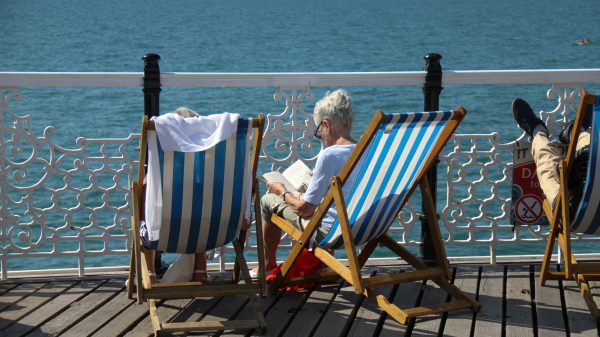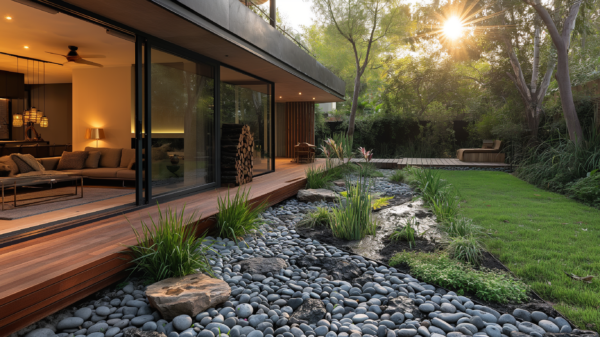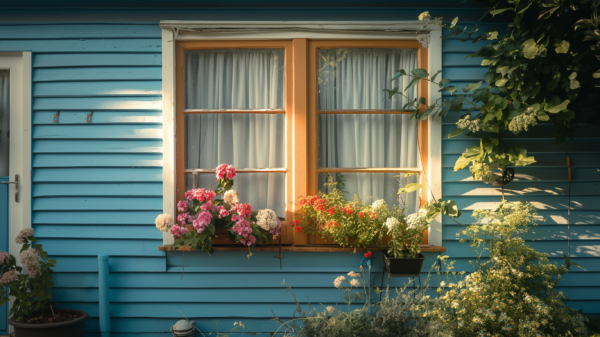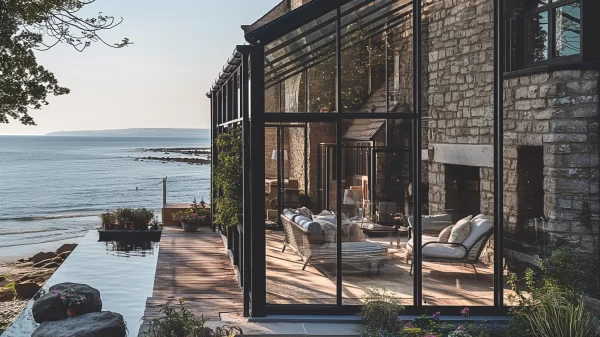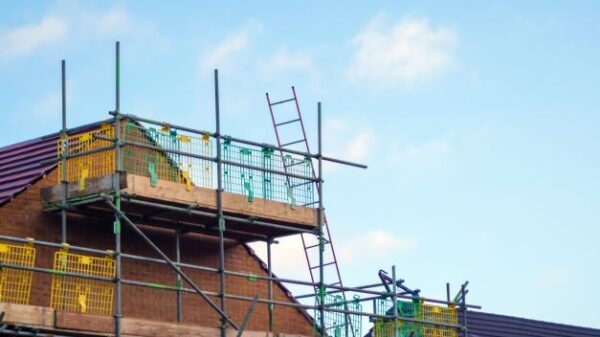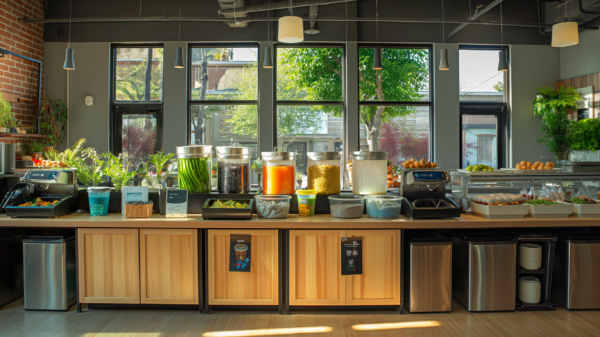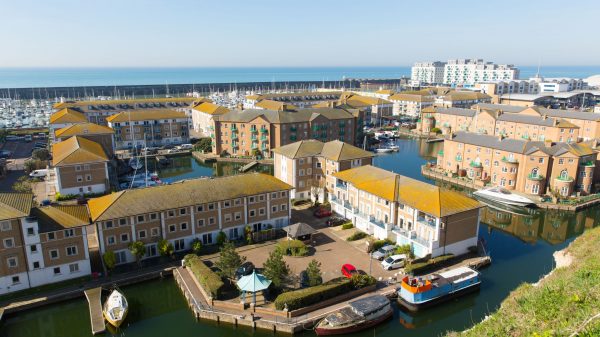Georgian architecture is characterised by large windows, high ceilings, ornate mouldings, and elaborate woodwork. The homes built during the Victorian era are much smaller than those of Georgian design. They are typically single-story structures with low-pitched roofs, narrow windows, and small porches. The Edwardian Period lasted from 1901 to 1910, and it saw the rise of modernism and the beginning of the Art Deco movement. This was a period of significant change and innovation.
The Georgian style originated in England around 1720. It was named after King George I. His reign marked the start of the English Empire.
He ruled Great Britain, Ireland, and most of North America. Over the next few decades, many wealthy people moved into Georgian neighbourhoods to live in a home that reflected their status.
During the Victorian Era, there was a massive influx of wealth. People flocked to cities like London and New York to find work. As a result, housing prices skyrocketed. Many rich people couldn’t afford to build grand mansions anymore. Instead, they bought lots of land and built modest homes.
These homes had fewer rooms, less ornamentation, and lower ceilings.
In contrast, the Edwardian Era began in 1901. Queen Victoria died in January that year, and her son, Edward VII, became king. He was known for his love of hunting and horseback riding. When he ascended to the throne, he brought along several aristocratic friends. One of them was Prince Albert Victor, Duke of Clarence and Avondale. He was born in 1864 and grew up in Buckingham Palace. After the death of his father, he inherited the Dukedom.
Edward VIII abdicated the throne in 1936, and his brother, George VI, took his place. By the time George VI died in 1952, he’d been crowned twice. His daughter, Elizabeth II, succeeded him. She reigned for 60 years.
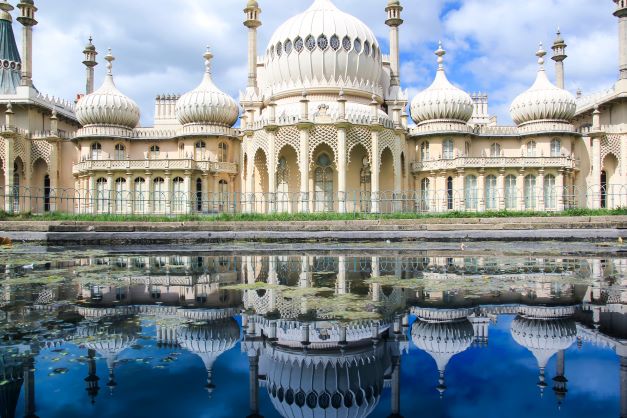
Brighton Pavilion’s Indo-Saracenic architecture is Georgian
How to tell if a house is Georgian, Victorian or Edwardian
Georgian period houses are often referred to as the Queen Anne style. These homes are larger and broader than in earlier periods, such as the English Regency, Italian Renaissance and French Empire. They typically have symmetrical front doors, windows and fireplaces. Woodwork is very common during this period.
Victorian-period homes are often called the Second Empire style. They tend to be smaller than Georgian-period homes. Front doorways are narrower than those found in Georgian period homes. Windows tend to be shorter, and there is less ornamentation. Fireplaces are usually located near the centre of the room.
Edwardian-period homes are similar to Georgian-period homes. However, the ornate detailing is much more pronounced. There are many roofs, bay windows, turrets and towers. There are often elaborate stained glass windows.
Georgian, Victorian or Edwardian – what’s the difference?
The Georgian period lasted from 1714 to 1837, followed by the Regency period, which ran from 1815 to 1830. Then came the Victorian era, lasting from 1837 to 1901. Finally, we arrive at the Edwardian period, which lasted from 1901 to 1910.
Victorian property characteristics
The term “Victorian” describes a style of architectural design that originated in England during the mid-19th century. This period of history saw a shift away from the use of heavy stone construction towards lighter materials such as wood and iron. Architectural styles associated with the Victorian era include Gothic Revival, Queen Anne, Neo-Gothic, Romanesque Revival, Renaissance Revival, Baroque Revival, Italianate, French Second Empire, Beaux Arts, Art Deco and Streamline Moderne.
Victorian architecture is characterised by ornateness, fine craftsmanship and elaborate detailing.
Ornamentation includes carved wooden beams, intricate mouldings, painted ceilings and ornate fireplaces. Fine craftsmanship involves the creation of furniture, textiles, ceramics and metalwork.
In the 19th century, there was a trend towards living in larger houses rather than cramped apartments or tenement buildings. Large homes had bay windows, stained glass, decorative brickwork and grand staircases. These features are still common today.
A Victorian house will often have bay windows. Bay windows are tall, narrow windows located above ground level.
They allow light into rooms while providing views out onto the landscape. Victorians used cast iron extensively in building structures. Cast iron is a type of wrought iron forged into shape. It is robust, durable and easy to maintain.
Victorian architecture uses various roofing materials, including tile, slate, copper, lead and asbestos shingles. Tile roofs are flat, smooth surfaces covered with ceramic tiles.
Slate roofs are similar to tile roofs, except they are usually longer and more comprehensive.
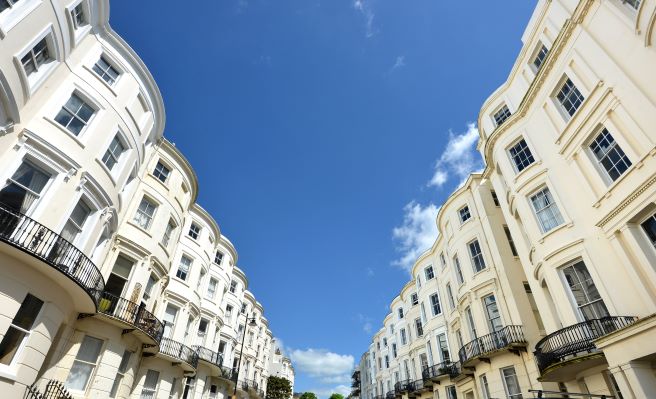
Georgian Houses are common in Hove
Is Your Home Georgian?
The Georgian period is considered the Golden Age of British architecture. Many Georgian properties have brick walls to avoid paying taxes. This style is known for being very symmetrical and having lots of windows. So what do you know about Georgian homes? Do you recognise some of your favourite buildings? Take our quiz to find out.
How to Spot a Georgian Property:
Georgian architecture is one of the most recognisable styles in the world. This style originated in Georgia, a former Soviet republic located in Eastern Europe.
Georgian homes are characterised by tall roofs, elaborate ornamentation, and symmetry. There are many different types of Georgian architecture, including traditional Georgian, Neoclassical, and revivalist.
The best way to spot a Georgian property is to check the exterior. Look for a balanced facade with sash windows and ornate doorways. You might even notice some symmetry in the layout of the home. Inside, you’ll find plenty of space and high ceilings. Georgian properties typically feature large rooms, wide hallways, and spacious staircases.
How to tell if a house is Georgian
A Georgian house is often more spacious because of its original size, creating a sense of spaciousness. This style of architecture is most commonly found in England. Homes are typically built around a central courtyard, giving the impression of being much more significant than they are. They tend to have high ceilings, making the rooms seem even more prominent. There is usually one main door leading into the house, which leads to the front porch. The porch is where you will find the main entrance to the house and is often used for entertaining guests.
Georgian homes are known for having very tall walls. These walls are meant to keep out cold winds coming from the north. The top floor is generally smaller than the ground floor, creating a sense of space. Windows are usually few and far between, allowing light to enter the house.
The roofline is always sloped, creating a lower ceiling on the bottom floor and a higher ceiling on the upper floors. In addition, Georgian roofs are covered in tiles rather than shingles.
Standard features of Georgian homes
Georgian architecture is known for its simplicity, harmony, and beauty. This style of architecture is often referred to as “the Queen of Styles.” Its popularity lies in the fact that it is easy to build and maintain and is suitable for every type of climate. In addition, Georgian architecture is known to have been influenced by the Romans, Greeks, Byzantines, Arabs, Persians, Turks, and Mongols.
The most common feature of Georgian architecture is its flat roof. A flat roof allows light into the home, making it bright and airy. Another prominent characteristic of Georgian architecture is its symmetry, proportion, and balance. Symmetry refers to having equal parts of something; ratio means having similar sizes or shapes, which means having no imbalance. These three characteristics are what make Georgian architecture unique.
Flat, shallow, and square roofs are another defining characteristic of Georgian architecture. Flat roofs allow sunlight to enter the house, while shallow roofs keep the rain out. Square roofs are usually found in small homes, such as cottages. Houses built with local materials tend to be more robust and more durable. Local materials include bricks, stone, clay, wood, and metal.
In conclusion, Georgian architecture is a stylish and straightforward style of architecture. It is best suited to people living in cold climates. It is also suitable for people looking for a warm and cosy home.
Georgian windows
The Georgian window is one of the most popular styles of windows today. They are often called “Georgian” because the style originated in Georgia during the 18th century. These windows are designed to look as though they are hundreds of years older than they are.
They are straightforward to install and maintain. You don’t even need a ladder to put them up. If you’re looking for a classic design that won’t break the bank, this is what you’ve been searching for.
Is Your Home Victorian?
The term “terrace house” describes a type of housing where each house is joined to the one next to it by a wall. This type of building was popular in England during the 19th century. Terraces are usually rectangular and arranged in rows. Each row contains three to five homes, depending on how many stories there are.
Terrace houses were cheaper and easier to construct than townhouses because they didn’t require expensive foundations. They could be built quickly and cheaply and were often built next to industrial buildings or workshops. Terraces were popular with the working class.
How to tell if a house is Victorian
The term “Victorian” describes a style of architecture that originated around 1830. The name refers to Queen Victoria, who reigned over England during that period. Houses built during this era were designed heavily influenced by European styles such as Gothic Revival, Renaissance Revival, and Neoclassical.
Victorians often used red brick, stone, wood siding, and ornate trim. Some homes even included turrets and gables. These houses were typically built in neighbourhoods with large lots, making room for gardens and trees.
Victorian houses came in many different shapes and sizes. Some were very simple; others were quite elaborate. In general, however, these homes were much larger than those built earlier.
There are several ways to identify a Victorian home:
- Take note of the roofline. If it looks like a steeple, you’re looking at a Victorian.
- Check for tall chimneys.
- Look for bay windows, pointed windows, and dormers.
- Pay attention to the way doors open and shut.
- Notice the size of the house.
How to Spot a Victorian Home:
A wide variety of features will help you identify whether a home is Victorian. Here are five things to consider:
- Roofline
The roofline of a Victorian home is typically steeply pitched, with gables and dormers. These elements give the building a distinctive profile and make it easy to spot.
- Porches
Victorian homes often have porches. If there is no porch, check out the front door. Look for a small window above the entryway. This type of window is called a transom. Transoms are standard in older buildings because they allow light into the foyer while protecting people from rain and snow.
- Windows
Windows are another feature that helps distinguish Victorian architecture. Many windows are double-hung, meaning that they open vertically and horizontally. Double-hung windows are easier to clean and maintain than single-hung windows.
Common features of Victorian houses
The term “Victorian” describes a style of architecture popular during the 19th century. Homes built during this era had elaborate decorations such as ornate woodwork, intricate mouldings, and stained glass windows. These homes often included elements like fireplaces and high ceilings. In addition, many Victorians used decorative tile work.
There are many different types of Victorian home styles. For example, some Victorian homes have a simple design, while others include turrets, bay windows, and gables. Some Victorian homes have a single story, while others have multiple levels.
Many Victorian homes have been preserved over the years and are now open to the public. You can find examples of Victorian homes throughout the United States.
Victorian Windows
These windows look gorgeous and will give you a unique style to your home. They come in many different sizes and shapes, and many additional finishes are available. You can find them online or in stores near you.
Victorian Sash Windows Designs
A sash window appeals to those looking to improve their home without spending too much money. They come in various styles and designs, making it easy to find one that suits your needs. In addition, you don’t have to worry about replacing your current windows because most sashes are compatible with existing casement windows.
There are numerous benefits associated with sash windows. For example, they provide better insulation than traditional windows, keeping your house warmer during winter. Also, they are energy efficient, helping to reduce heating costs. Sash windows can also be installed quickly, saving you time and money. Finally, they offer superior security than standard windows, making them safer for family members and pets.
The following are some examples of Victorian sash window designs.
- Two-light sash window
- Three-light sash window with fanlights
- Four-light sash window.
- Five-light sash window, with a single light above each side panel.
Is Your Home Edwardian?
Edwardians loved small homes. Most people think Edwardians lived in large mansions with many rooms and servants. But that’s not what happened. Edwardians lived in smaller houses with less space. And while some people still think that Edwardians enjoyed bright colours, they preferred muted tones such as brown or grey.
How to Spot an Edwardian Home:
The term “Edwardian” conjures up images of grand old houses and gardens filled with flowers and fountains. But what does it mean today? We’ve rounded up some tips to help you identify a home built during the Victorian era.
How to tell if a house is Edwardian
Edwardians lived during the Victorian era but weren’t like Victorians; they didn’t live inside houses. Instead, they preferred to reside in massive estates surrounded by gardens and fields. This meant they needed a lot of space and got it. Most of the homes built during the Edwardian period are still standing today.
To help you figure out whether or not a home is from this period, here are some things to look for:
- Lots of windows – Most houses built during the Edwardian era had many windows. Windows lets light into rooms, making it easier to see what you’re doing.
- A lot of doors – People wanted to keep their homes warm during the Edwardian era. To do this, they used a lot of doors. These days, we use heating systems to keep our homes warm, but during the Edwardian era, there wasn’t much choice.
- Rooms with high ceilings – One thing about the Edwardian era was that people enjoyed living in spacious homes. Because of this, many of the homes built during this time had very tall ceilings.
- Spacious kitchens – Another feature of Edwardian homes was that they had spacious kitchens. People cooked meals in the kitchen because it was where everyone gathered. Today, we cook in smaller areas, such as the dining room.
- Open floor plans – When you think of the Edwardian era, you probably imagine large, sprawling homes filled with ornate furniture and rich colours. But while those kinds of homes existed, they were rare. Instead, most homes during the Edwardian era were small and simple.
The Edwardian era lasted until 1914 when the First World War broke out. After the war, people began building broader and better homes, and the style changed. We’ll talk more about how to identify different types in future videos.
Common features of Edwardian houses
There are many common features of the Edwardian era. In particular, Edwardian architecture has several characteristics that make it stand out among other styles. One such feature is the wide hallway. This feature is present in most of the houses built during this period. Another characteristic is the steep roofline. During the Victorian era, roofs were flat. However, during the Edwardian era, roofs became much steeper. This change allowed architects to build larger windows without sacrificing interior space. A third feature of the Edwardian Style is the use of red bricks. Brick was used extensively during the Victorian era. But during the Edwardian period, it was replaced with stone. Finally, the fireplace was a key element of the Edwardian Style. Shelves were added to the sides of fireplaces, allowing homeowners to place books and magazines inside.
Edwardian property characteristics
A Georgian Revival house would have had six two-panel sash windows, a porch supported by Doric columns, and a hipped roof. This type of architecture became popular during the Victorian era, particularly in England, and continued into the early 20th century. However, it wasn’t always called “Georgian.” Several styles could be considered “Georgian,” including Queen Anne, Palladian, Italianate, and Romanesque Revival.
The mock Tudor style was very popular between 1890 and 1920. The style features half-timbering, a steeply pitched gable end, and a decorative frieze above the eaves. This style is often associated with English manors, such as those found in the countryside near London.
Edwardian houses often had six-over-two-panel sash windows. These windows were typically located on the upper floor of a home. They’re usually rectangular, although some designs include a bow window.
Edwardian windows
The Edwardian style is one of our most popular window styles. This traditional look features large panes of glass framed by decorative woodwork and leaded lights. These windows offer timeless beauty and elegance while still providing energy efficiency.
Edwardian Sash Window Styles
We proudly offer Edwardian sash window styles for homeowners who want to replace their existing timber sash windows. These traditional-style windows feature elaborate woodwork, large panes of glass, and leaded lights. They are suitable for adding character to period properties while still energy efficient.
Our high-quality UPVC windows give homeowners modern benefits such as improved insulation and security, increased strength and durability, and lower maintenance costs. The design of our newly installed sash windows will add a classic feel to the home while maintaining the property’s original appearance.
What is the difference between a Georgian, Victorian and Edwardian property?
Georgian houses are larger (up to 3,500 square feet) than Victorian or Edwardian properties. They are typically three stories high, and most have a central staircase leading up to the front door.
Victorian houses tend to be smaller (1,500 to 2,200 square feet) and have two floors. Most of them have cast-iron balustrades around the outside of the building.
Edwardian houses tend to be about the same size as Victorian houses. Many of them still have cast-iron balconies.
The difference between period architecture
Victorian-era homes tend to be much more ornate than modern ones. This style includes gables, bay windows, turrets, gingerbread trim and elaborate woodwork. Edwardian homes include many styles, such as Tudor Revival, Art Nouveau, Georgian Revival, American Craftsman, Prairie Style, Spanish Colonial Revival, Mission Revival, Mediterranean Revival and others.
Edwardian houses were built after the death of Queen Victoria and before WWI. They are characterised by large front porches, high ceilings and fireplaces. Some features of Edwardian homes include stained glass windows, intricate mouldings, arched doorways, crown moulding, coffered ceilings and parquet floors.
Georgian and Regency Architecture (1714-1830)
There are many Georgian-style properties near London. These buildings are in prime locations such as Mayfair, Kensington, Chelsea and Notting Hill. Many of these houses are listed buildings and are protected by law. A few of them are even listed as Grade I.
Georgian architecture is characterised by symmetrical facades, flat roofs, large windows and spacious rooms. The interiors are decorated with white walls and wooden floors. This type of architecture became popular during the 18th century because it was considered fashionable.
In 1714, Queen Anne commissioned architect William Kent to build her palace in Greenwich. He designed it in the Georgian style. He built about 50 Georgian-style houses in London. Most of them still exist today.
The Regency period refers to the period following the French Revolution. During this time, England experienced economic growth and prosperity. As a result, people had money to spend on luxury items like furniture, paintings and interior design.
The Georgian style continued to evolve throughout the 20th century. Today, it is known as Neo-Georgian.
Victorian Architecture (1837–1901)
The Victorian era began in 1837 and lasted until 1901. During this time, Britain experienced rapid industrialisation and urban growth. This resulted in a massive demand for housing. In response, architects designed grand homes with lavish interiors.
These homes were often substantial and had high ceilings. They were decorated with elaborate woodwork, stained glass windows, marble fireplaces and plaster mouldings.
During the late 19th century, there was a trend towards using cast iron, gas lighting, wrought iron and steel. This led to the development of distinct styles of architecture, including Art Nouveau and Arts & Crafts.
Loft conversions are popular because they allow homeowners to enjoy the benefits of living in a historical property while adding modern amenities. Many people choose to do a loft conversion because it allows them to save money. They can avoid paying for expensive renovations or wall removal. Instead, they extend the existing roofline, install skylights and build a staircase.
Edwardian architecture (1901 to 1918)
The Edwardian style of architecture emerged around 1901 and lasted until about 1919. This style of architecture was popular throughout England.
Georgian Sliding Sash Windows
The Georgian-style window is among the most popular types of windows used throughout the world today. This type of window offers a traditional look and feel that adds character to homes. Georgian sash windows are traditionally made of wood or composites. They feature a unique design where each panel slides up and down along tracks. Georgian sash windows come in many different sizes and shapes and are designed to fit into any architectural style.
What’s the difference between a bay window and a bow window?
A bay window is taller and wider than a bow window, giving it a larger opening area. This window provides a view of the outdoors and lets in more sunlight. They are typically found in older homes where there is limited space for windows.
A bow window is narrower and shorter than a bay window. These windows provide a smaller opening area, making them ideal for modern homes. They usually offer a view of the inside of the house.
You can choose a bay or a bow window depending on what fits your needs best. Both windows are designed to bring in lots of natural light while providing privacy.
What is a bay window?
A bay window is a typical architectural design feature consisting of 3 or 4 panes of glass set within an opening in a wall. It is often used to provide light and ventilation. They are most commonly found in older houses, especially those built before 1920.
What is a bay window?
A bow window is a typical window that curves inwardly toward the centre of the house, making it look like a bow. These windows are typically used in older houses and are often rectangular-shaped. They are common in modern architecture and are frequently used in residential homes.
Types of bay windows
A bay window is an excellent addition to any home. They offer a stylish look and provide plenty of space for seating and entertaining. There are several different types of bay windows to choose from, and each one offers something unique.
Casement windows are the most common type of bay window found today. These windows swing outward like a door and open to let in lots of natural light. They are easy to clean and maintain, making them popular among homeowners. However, casements tend to be heavier than sash windows and require extra work.
Bay windows with sashes are similar to casement windows except that they don’t open outwards. Instead, they slide horizontally along tracks. This makes them much lighter and easier to move around. Because they do not open outwards, they are less likely to cause damage to walls and floors during installation.
Bay windows with louvres are another option. Louvred windows are very similar to casement windows because they open horizontally. However, louvres allow air to flow into the room while keeping insects out.
Traditional Sash Window Styles
Sliding sash windows are one of Britain’s most prominent features. These windows slide horizontally along tracks rather than vertically, like traditional casement windows. This design allows people to open large windows without lifting heavy weights.
They are still prevalent in rural areas, providing a practical solution to opening large windows. There are over 50 million sliding sash windows installed across the UK alone. However, this only happens sometimes.
Traditional sash windows became common in the late 19th century. Before that, people used different methods to open their windows, such as lifting the window frame off the wall.
Replica windows are an excellent option for those looking to save money while maintaining the look and feel of a traditional sash window. There are several companies out there offering replica windows. Some companies even use original materials to recreate the appearance of a conventional sash-style window.
What is a sash window?
A sash window is a double-hung window where both panes move together rather than independently. This allows for greater ventilation and light control. They are often found in older homes and buildings because they offer better insulation against noise and weather. They are also easier to operate than casement windows.
The sash window is one of the oldest types of windows still used today. It is believed that the Romans invented the design. These windows were originally made of wood and glass. Eventually, metal frames replaced wooden ones.
Many styles of sash windows today include single, double, triple, and even quadruple-glazed units. Some people prefer the look of traditional sash windows, while others like modern designs. There are pros and cons to each style. Modern windows tend to be stronger and less likely to break. However, they do cost more money to purchase and install. Traditional sash windows are typically cheaper to buy and maintain. They also require more maintenance because they require more maintenance to keep clean and look good.
What Is A Box Sash Window?
Box sash windows are a sliding sash window hanging vertically along the side of an opening. They are commonly used in commercial buildings. They are often referred to as “box sashes”.
Sliding sash windows are another name for double-hung windows. Double-hung windows slide horizontally across the frame.
A box sash window is usually found in commercial buildings where it is required to pass building regulations.
What is the difference between the two?
A box sash window is a double-hung window where both sashes move up and down together. They are often used in older homes because they require less maintenance. A box sash window uses wooden slats to hold the glass panes and the sashes themselves. These windows are typically found in older houses and are quite heavy.
Box sashes are still popular and can easily be operated without tools. However, they are more challenging to install and maintain than modern vinyl windows.
The most significant feature of box sashes is that they have a straight balance line. This makes it easier to see through the window and gives the appearance of a larger opening.
Spiral balusters are usually hidden behind the frames and may affect the appearance. If you want to make a statement about your home, consider installing spiral balusters.
Different eras, different sash window design
In the United Kingdom, sash windows are essential to architectural history and heritage. They are usually divided into six panes, although some examples exist with eight panes.
Georgian sash windows are typically divided into six panes, whereas Victorian sash windows are generally divided into two panes. Edwardian sash windows are a combination of both designs.
Traditional window features
Window sash design is one of the most iconic elements of historic architecture. It’s often referred to as the “window frame.” Traditionally, window frames were made from wood, steel, or stone. However, there are many ways to create a classic look today.
Should I choose a box sash or a sliding sash?
Box sashes are an option for homeowners looking to maintain the look of their homes without sacrificing ease of use. Sliding sashes offer a similar look but allow for a more effortless opening. Both designs have pros and cons, so it’s important to understand what each offers before deciding. Here are some things to consider when choosing between the two.











